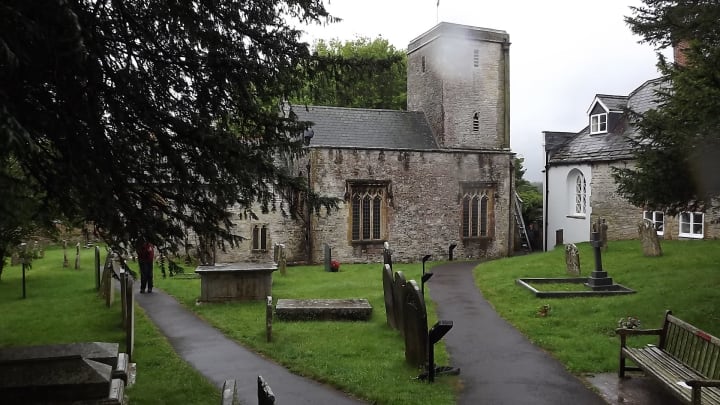The two funerals of Thomas Hardy
A compromise was needed to satisfy local and national demands

The novelist and poet Thomas Hardy died, aged 87, on 11th January 1928 at Max Gate, his home on the edge of Dorchester, Dorset. His final full-length novel, “Jude the Obscure” had appeared as long ago as 1895, but he continued to write poetry almost to the day he died, clocking up around 1,000 poems during his lifetime.
At his death he was regarded as one of the foremost literary figures of his age. Although he was never knighted he did receive one of the highest honours that a writer could be awarded, namely membership of the Order of Merit in 1910. If anyone merited a place in Westminster Abbey’s Poets Corner it had to be Thomas Hardy.

A dilemma and a compromise
However, Hardy himself had other ideas and he had expressed a wish to be buried alongside his parents, grandparents and first wife in the churchyard at Stinsford, only a few miles from both his current home and the cottage in which he had been born and had spent his early years. This desire was echoed by the surviving members of his family.
The call for a more public funeral was led, oddly enough, by Hardy’s own literary executor, Sydney Cockerell, who chose to ignore Hardy’s wishes. The great and the good soon leapt on the bandwagon, with luminaries such as Sir James Barrie (author of “Peter Pan”) and the Prime Minister, Stanley Baldwin, being of their number. The Dean of Westminster was at first reluctant to agree, as he was aware of Hardy’s unconventional religious and moral views (as expressed in novels such as “Tess of the d’Urbervilles” and “Jude the Obscure”), although he really had little choice but to allow the request.
Back in Dorset, however, the response was far from enthusiastic. Thomas Hardy may have been a national figure but he was first and foremost a Dorset man, and that, according to the people of Dorset, was where he belonged. A compromise was needed, and this came from the Vicar of Stinsford, the Rev Cowley, who said that, because Hardy was at heart a local man, his heart should stay in the locality.
This solution was therefore adopted. A doctor opened Hardy’s body and removed his heart which was then placed in a small casket. The rest of his body was taken to London for the Westminster Abbey funeral.
So, at 2pm on 16th January 1928 two very different ceremonies took place. This was only five days after Hardy had died, but it was still possible for hundreds of people to drop what they were doing and give Thomas Hardy a magnificent send-off.
At Westminster Abbey
Hardy’s remains were accompanied into the Abbey by both the Prime Minister and the Leader of the Opposition (Ramsay Macdonald), together with literary figures including Sir James Barrie, George Bernard Shaw, John Galsworthy, Rudyard Kipling and A E Housman. The body had already been cremated, so the casket that was buried in Poets Corner only contained Hardy’s ashes and a spadeful of Dorset soil.
In Dorset
At Stinsford, after a service in the church, Rev Cowley carried the casket containing Hardy’s heart along the short path from the church door to the grave in which Emma Hardy had been buried in 1912. He was accompanied by Thomas’s brother Henry (who would find his own place in the family plot later that year) and the path was lined by as many local people as could fit into the confined space. Hardy’s heart was placed alongside Emma’s coffin, where it still lies with the inscription on the grave recording that “Here lies the heart of Thomas Hardy OM”.

There was actually a third service held that day, at St Peter’s Church in Dorchester, which gave the people of the town their chance to pay their respects.
There is a story that is resurrected from time to time to the effect that Hardy’s heart was not actually buried in Stinsford Churchyard at all. When the doctor extracted the heart, so the story runs, he left it on his kitchen table when he had to answer a knock at the door. When he returned, he saw to his horror that his cat had found the heart and was making short work of it. He therefore substituted a pig’s heart from the local butcher’s shop, and that is what ended up in the casket. It’s a good story, but one that has “urban myth” written all over it. One can believe it or not, as one wishes, but surely Thomas Hardy himself would have been highly amused by it had it been true. It is just the sort of story that he would have liked to tell.
About the Creator
John Welford
I am a retired librarian, having spent most of my career in academic and industrial libraries.
I write on a number of subjects and also write stories as a member of the "Hinckley Scribblers".






Comments
There are no comments for this story
Be the first to respond and start the conversation.